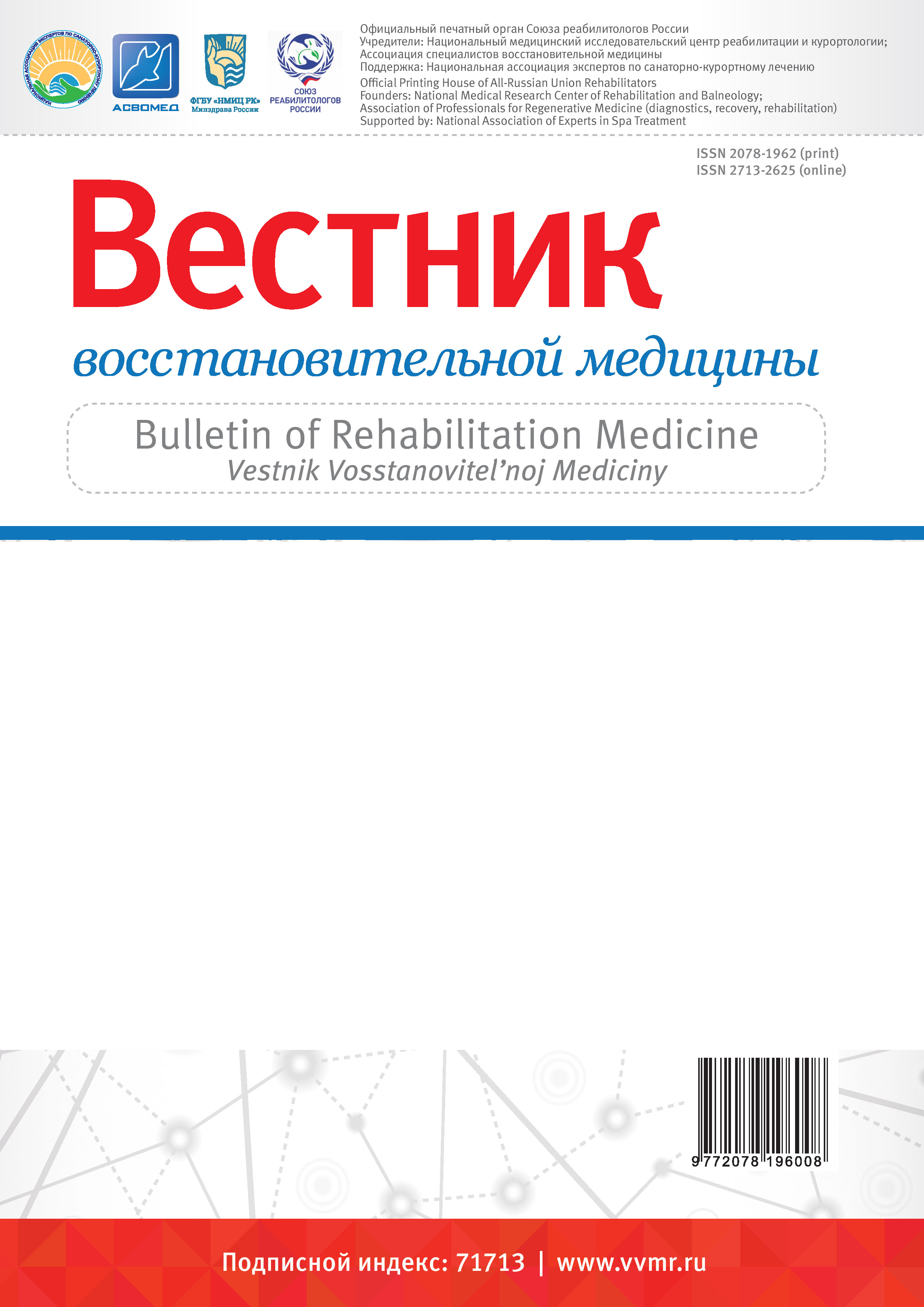ВВЕДЕНИЕ. В настоящее время нервно-психические расстройства широко распространены среди населения. Их возникновение связано с воздействием хронического эмоционального стресса. По многим причинам большинство людей, когда они испытывают стресс или более серьезные расстройства, не готовы обращаться за помощью к психологу или психотерапевту. Оригинальная методика снижения биоэлектрической активности лицевых мышц, разработанная и описанная в данном исследовании, может стать доступным и безопасным способом коррекции психоэмоциональных состояний и, следовательно, улучшения эстетического внешнего вида. ЦЕЛЬ. Разработать современный метод коррекции психоэмоциональных отклонений, основанный на использовании техник миофасциального массажа и разработке механизма лицевой обратной связи. МАТЕРИАЛ И МЕТОДЫ. Методы исследования включают психологический, нейрофизиологический и клинико-функциональный компоненты, позволяющие оценить психоэмоциональный статус и электрофизиологические параметры лицевых мышц. РЕЗУЛЬТАТЫ И ОБСУЖДЕНИЕ. Результаты исследования показали высокую эффективность методов миофасциального массажа лица в коррекции психоэмоциональных расстройств, что проявилось в снижении уровня депрессивной симптоматики, личностной и ситуативной тревожности, снижении биоэлектрической активности лицевых мышц и болевого синдрома. Полученные данные позволяют предположить, что использование техник миофасциального массажа является эффективным психокоррекционным инструментом, разрывающим порочную связь между длительным мышечным напряжением и негативным эмоциональным состоянием пациента. ЗАКЛЮЧЕНИЕ. Метод нервно-мышечной релаксации является новым эффективным средством диагностики психоэмоциональных отведений и повышения тонуса мимических мышц за счет создания мимической обратной связи.
стресс, мышцы лица, обратная связь с лицом, гипертонус, миофасциальный массаж лица
1. «Depression: let’s talk» says WHO, as depression tops list of causes of ill health. 2018. Available at: https://www.who.int/news-room/headlines/30-03-2017--depression-let-s-talk-says-who-as-depression-top.... (accessed 25.10.2022).
2. Heller A.S., Lapate R.C., Mayer K.E., Davidson R.J. The face of negative affect: trial-by-trial corrugator responses to negative pictures are positively associated with amygdala and negatively associated with ventromedial prefrontal cortex activity. Journal of Cognitive Neuroscience. 2014; 26(9): 2102-2110.
3. Finzi E., Norman E. Emotional proprioception: treatment of depression with afferent facial feedback. Journal of Psychiatric Research. 2016; (80,): 93-96.
4. Jochum H., Keel P., Baumgartner-Gruber A., Zeilhofer H., Leiggener C. Bruxism, myoarthropathy and psychosomatics. Swiss Dental Journal. 2019; 129(4): 287-292.
5. Komiyama O., Wang K., Svensson P., Arendt-Nielsen L., Kawara M., de Laat,A. The influence of psychological state on the masseteric exteroceptive suppression reflex and somatosensory function. Clinical Neurophysiology. 2008; 119(10): 2321-2328.
6. Baumeister J., Papa G., Foroni F. Deeper than skin-deep. The effect of botulinum toxin-A on emotion processing. Toxicon. 2016; (118): 86-90.
7. Dong H., Fan S., Luo Y., Peng B. Botulinum toxin relieves anxiety and depression in patients with hemifacial spasm and blepharospasm. Neuropsy-chiatric Disease and Treatment. 2019; (15): 33-36.
8. Dimberg U., Söderkvist S. The voluntary facial action technique: a method to test the facial feedback hypothesis. Journal of Nonverbal Behavior. 2011; (35): 17-33.
9. Finzi E., Rosenthalb N. Botulinum toxin for depression. Emotional proprioception. Journal of Psychiatric Research. 2016; (80): 93-96.
10. Giannakopoulos N.N., Keller L., Rammelsberg P., Kronmüller K.T., Schmitter M. Anxiety and depression in patients with chronic temporomandibular pain and in controls. Journal of Dentistry. 2010; 38(5): 369-376.
11. Neta M., Norris C.J., Whalen P.J. Сorrugator muscle responses are associated with individual differences in positivity-negativity bias. Emotion. 2009; 9(5): 640-648.
12. Lewis M.B. Exploring the positive and negative implications of facial feedback. Emotion. 2012; 12(4): 852-859.
13. Söderkvist S., Ohlén K., Dimberg U. How the experience of emotion is modulated by facial feedback. Journal of Nonverbal Behavior. 2018; 42(1): 129-151.
14. Hao M., Liu G., Gokhale A., Xu Y., Chen R. Detecting happiness using hyperspectral imaging technology. Computational Intelligence and Neurosci-ence. 2019.
15. Davis J., Senghas A., Brandt F., Ochsner K. The effects of botox injections on emotional experience. Emotion. 2010; (10): 433-440.
16. Hawlik A.E., Freudenmann R.W., Pinkhardt E.H., Schönfeldt-Lecuona C.J., Gahr M. Botulinum toxin for the treatment of major depressive disorder. Fortschritte der Neurologie Psychiatrie. 2014; 82(2): 93-99.
17. Finzi E., Rosenthal N. Botulinum toxin therapy of social anxiety disorder: a case series. Journal of Clinical Psychopharmacology. 2019; 39(4): 410-412.
18. Oberman L.M., Winklelman P., Ramachandran V.S. Face to face: blocking facial mimicry can selectively impair recognition of emotional expressions. Social Neuroscience. 2007; 2(3-4): 167-178.
19. Orlova O.R., Mingazova L.R., Morenkova A.E., Wayne A.M. The phenomenology of facial pain. Practical Neurology. 2002; (5): 21-22.
20. Sessle B.J. Neural basis of oral and facial function. Amsterdam: Elsevier Inc. 2014.
21. Kaewcum N., Siripornpanich V. The effects of unilateral Swedish massage on the neural activities measured by quantitative electroencephalography (EEG). Journal of Health Research. 2018; 32(1): 36-46.
22. Luo J. The neural basis of and a common neural circuitry in different types of pro-social behavior. Frontiers in Psychology. 2018: 859.
23. Method of neuromuscular relaxation of facial muscles. 2019. Available at: https://patents.google.com/patent/RU2705237C1/en?oq=RU2705237C1 (accessed 25.10.2022).
24. Le Louarn C., Buthiau D., Buis J. Structural aging: the facial recurve concept. Aesthetic Plastic Surgery. 2007; 31(3): 213-218.
25. Wieckiewicz M., Zietek M., Smardz J., Zenczak-Wieckiewicz D. Mental status as a common factor for masticatory muscle pain: a systematic review. Frontiers in Psychology. 2017: 646.
26. Dubinskaya A.D., Yurova O.V., Kotelnikova A.V., Gulaev Ye.N. Myofascial facial massage as a possible method for correcting psychoemotional states. Voprosy kurortologii, fizioterapii, i lechebnoi fizicheskoi kultury. 2019; 96(6): 24-30.
27. Dubinskaya A.D., Yurova O.V., Kotelnikova A.V., Tkachenko G.A. The relationship between psychological status and tonic activity of the facial muscles in apparently healthy women. Psychotherapy Questions. 2020; 73(78): 110-126.






